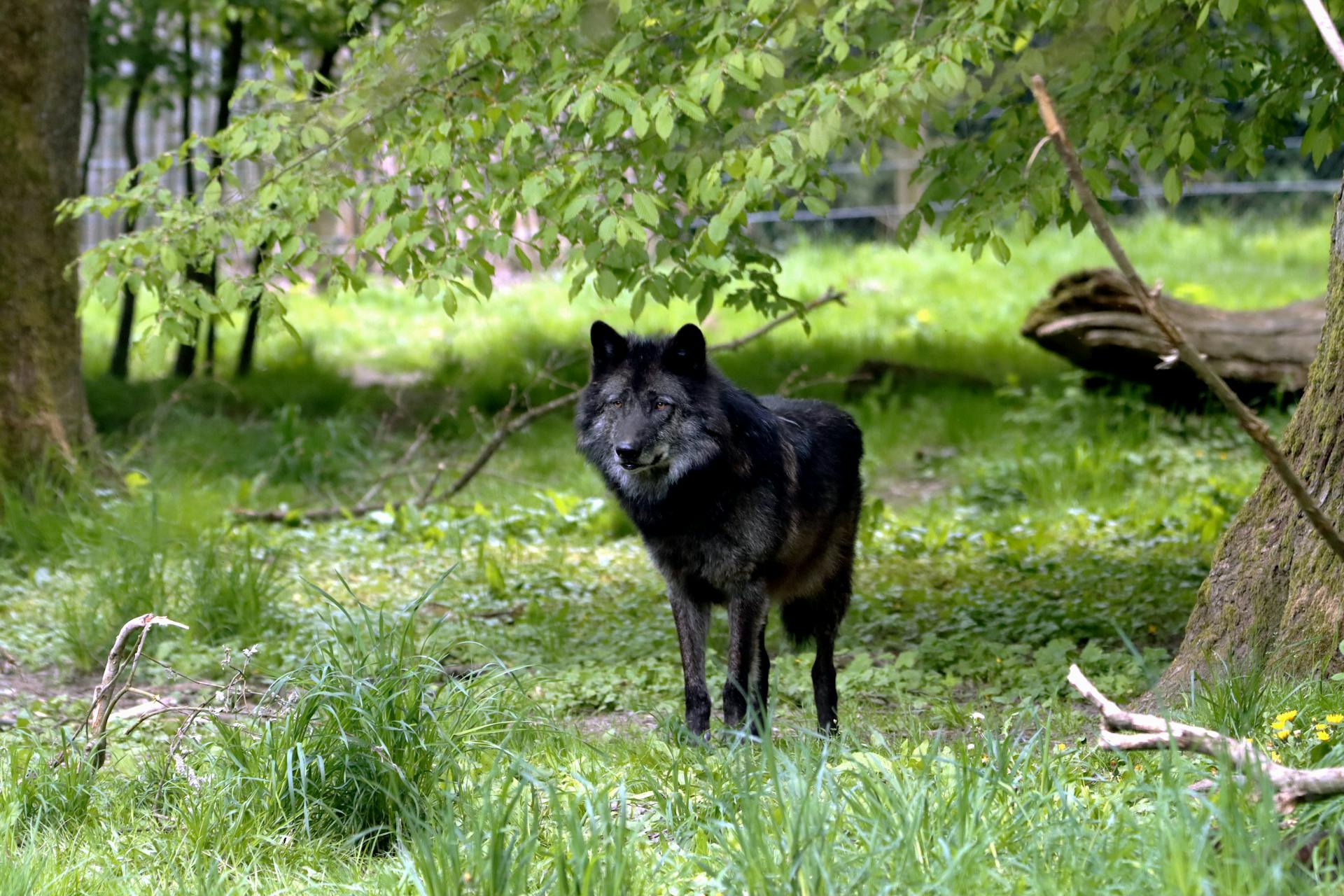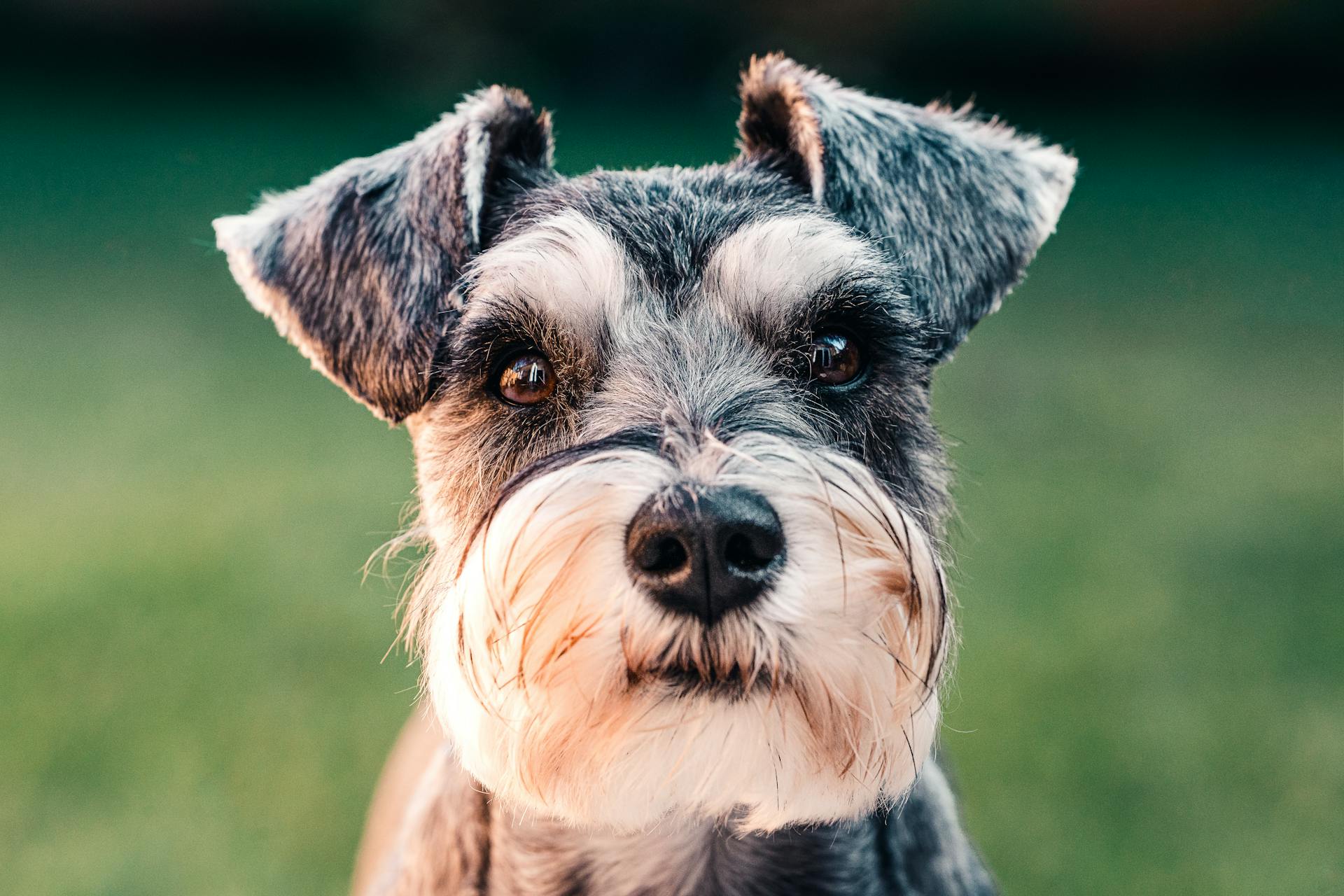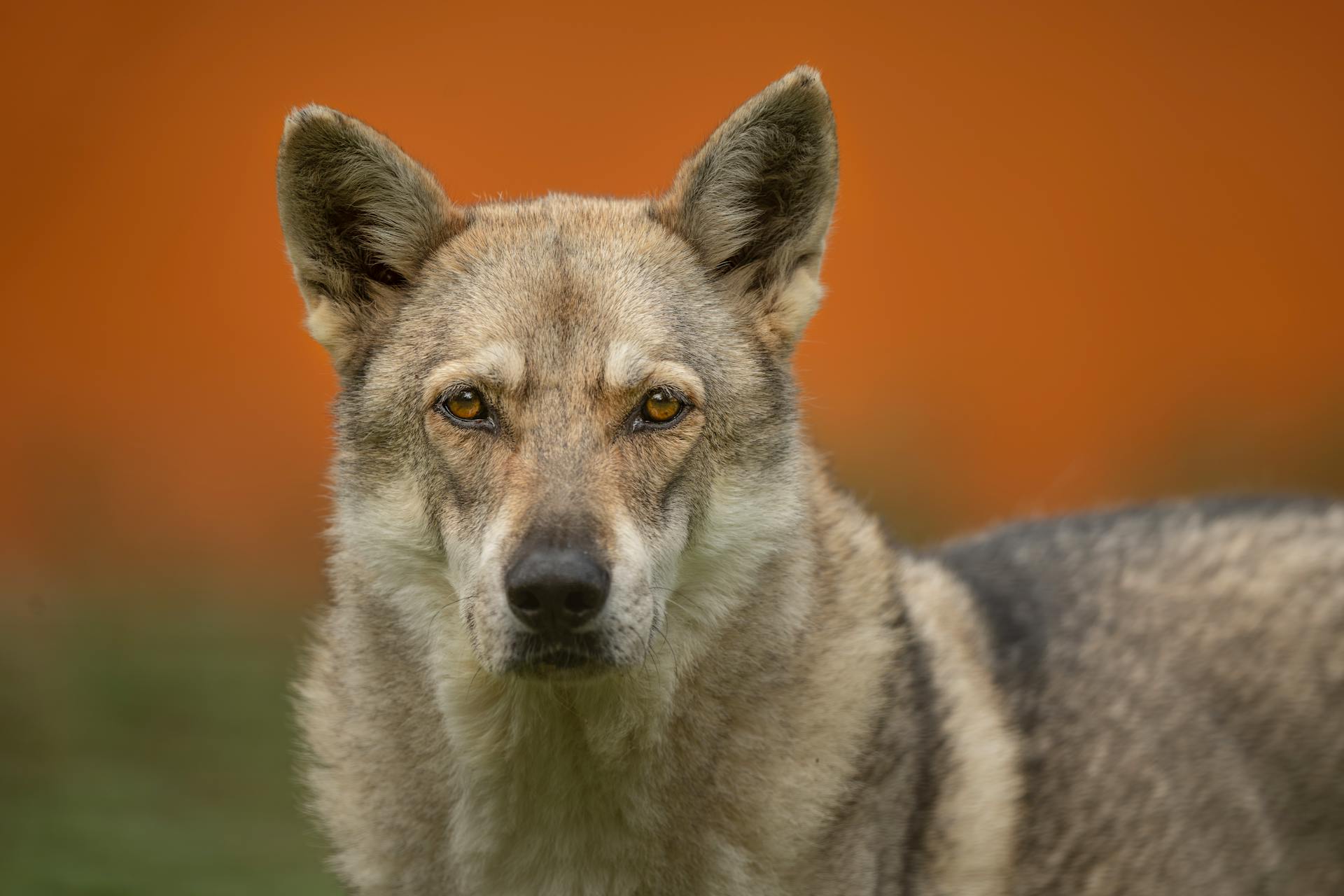
The Czechoslovakian Vlcak is a rare and unique breed, originating from the Czech Republic and Slovakia. They are a medium-sized dog with a muscular build, weighing between 44-66 pounds.
Their short, smooth coat requires minimal grooming, but they do need regular exercise to stay happy and healthy. A daily walk or playtime is essential to keep them physically and mentally stimulated.
One of the most distinctive features of the Czechoslovakian Vlcak is their intelligence and trainability. They excel in obedience training and are known to be highly responsive to commands.
Discover more: Czechoslovakian Wolfdog Breeders
Physical Characteristics
Czechoslovakian Vlcaks have strong jaws and triangular, pricked ears that give them a distinctive appearance.
Their rectangular bodies are muscular, and their tails hang straight down when at rest. This physical build allows them to thrive in various environments.
Czechoslovakian Vlcaks have a short, straight, and dense coat that varies based on the season, with a typical color range of yellow-grey to silver-grey with a lighter-colored mask.
Their coat is resistant to harsh weather conditions due to the thick undercoat and topcoat combination. This is particularly beneficial during winter months.
Males typically grow to be around 26 inches in height, while females reach around 25 inches.
Coat and Coloring
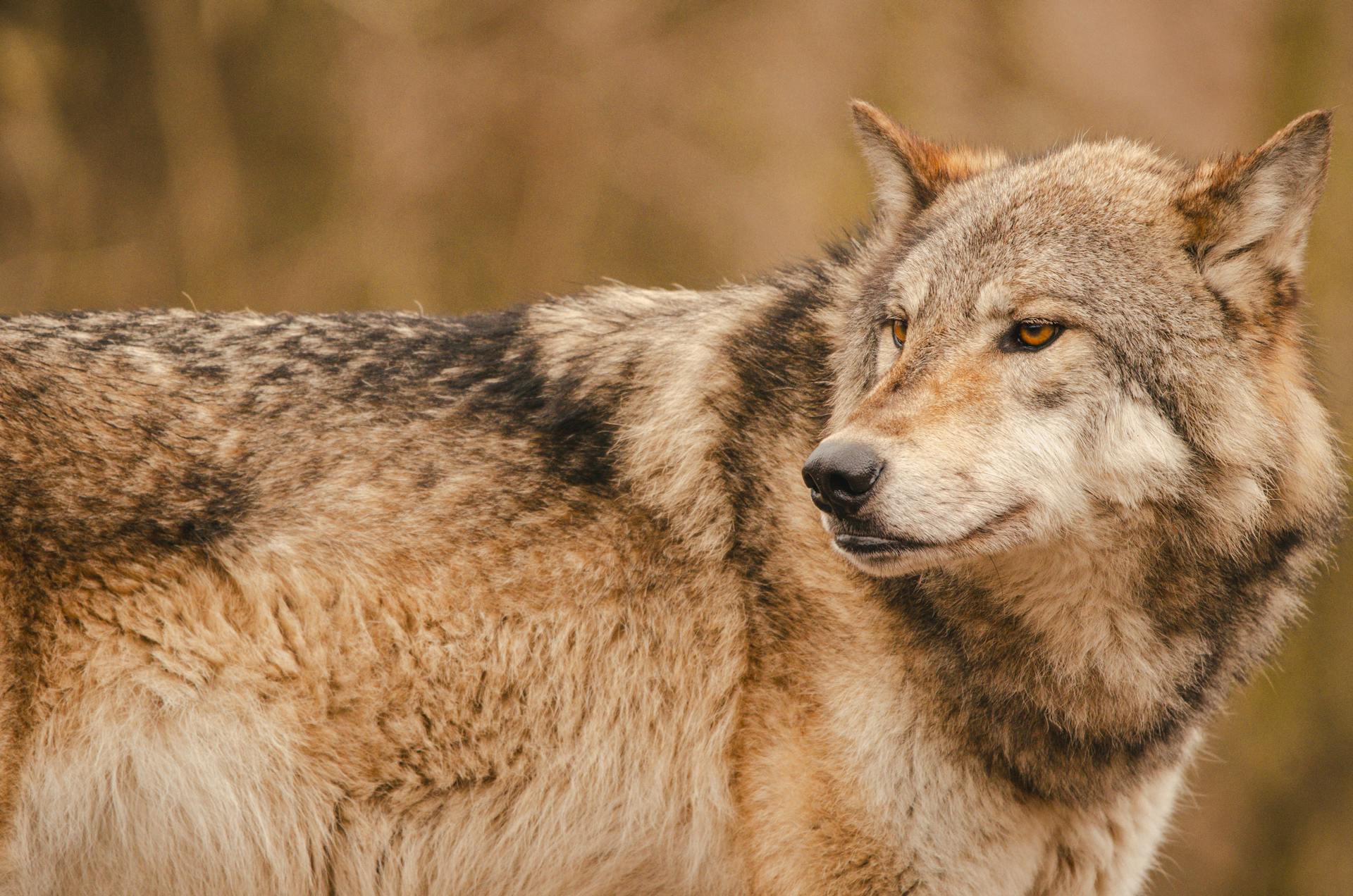
Czechoslovakian Vlcaks have a short, straight, and dense coat that varies based on the season. Their coat is thickest during the winter season.
Their coat is made up of a thick undercoat and a topcoat that works together to make them resistant to harsh weather conditions. This double coat enables them to regulate their body temperature in different weather conditions.
They typically have a yellow-grey to silver-grey color with a lighter-colored mask. Their coat coloration closely resembles that of a wolf, ranging from yellow-gray to silver-gray, often accompanied by a light mask.
Their coat is characterized by straight and coarse fur. They require minimal bathing, as they generally keep themselves clean.
Occasional brushing may be necessary to maintain their coat's condition. They tend to prefer cooler temperatures and can even enjoy rainy or snowy weather.
Their extremely thick and wolfish coats make them less suited for hot climates. It's essential to consider their coat characteristics and temperature preferences when providing them with a suitable environment.
Distinctive Physical Traits
Czech Vlcaks have strong jaws that are a defining characteristic of the breed. Their triangular, pricked ears are another distinctive feature.
Their amber-colored eyes are a striking feature that can give you a sense of their confident demeanor.
Size
Czechoslovakian Vlcaks fall within the upper range of the "medium" size category, approaching the threshold of the "large" category.
Males and females have a notable size difference, with males being significantly taller and heavier than females. Males should have a minimum height of 25.5 inches and weigh at least 57 pounds, whereas females should have a minimum height of 23.5 inches and weigh at least 44 pounds.
The height difference between males and females is not dramatic, with males measuring around 26 inches and females measuring around 25 inches. Males tend to weigh around 10 pounds more than females, with males weighing at least 54 pounds.
These measurements can vary slightly depending on the specific puppy, just like with humans. Some Czechoslovakian Wolfdogs may be born with slightly larger frames, while others may be more slender.
You might enjoy: Czech Wolfdog Size
Temperament and Personality
Czechoslovakian Vlcaks are very active, intelligent dogs known for their courage. They're extremely loyal to their families and make devoted companions.
Their dominant and independent personalities make them a good fit for experienced pet owners who can provide clear instructions and firm leadership. Early socialization is key to helping your Vlcak develop into a well-mannered companion.
Czech Vlcaks are naturally protective and suspicious of strangers, making them good guard dogs. However, their strong prey drive may lead them to pursue small animals, so it's essential to socialize them properly.
These dogs thrive on purposeful tasks, clear instructions, and firm leadership. Neglecting their exercise needs can lead to restlessness, unhappiness, and disobedience.
Czechoslovakian Vlcaks require at least two hours of exercise per day, which should include walks, playtime, obedience training, and opportunities for exploration. This will help keep them content and prevent behavioral issues.
Their high energy level and wolf lineage mean they may not coexist well with small animals in a home setting. It's crucial to be mindful of this during walks or outdoor playtime.
Czech Vlcaks are highly playful and spirited, making them excellent companions for families of all ages. However, their energetic nature may be overwhelming for elderly individuals.
With consistent and authoritative training from an early age, Czechoslovakian Vlcaks can excel in various roles, such as guarding families or livestock, and even military work.
History and Overview
The Czechoslovakian Vlcak is a unique breed that originated from a 1955 biological experiment in the CSSR, where a German Shepherd Dog was crossed with a Carpathian Wolf.
This experiment led to the creation of a powerful breed with exceptional senses and incredible stamina, capable of running 100 km in eight hours.
The breed was initially used as military working dogs and attack dogs, but with proper training, they also make excellent family dogs.
In 1982, the Czech Republic and Slovakia selected the Czechoslovakian Vlcak as their national breed, and the United Kennel Club recognized the breed in 2006.
The breed's popularity has led to widespread backyard breeding, making it difficult to find truly pedigreed Vlcaks, with fewer than 1,000 genuinely pedigreed Vlcaks in existence today.
History
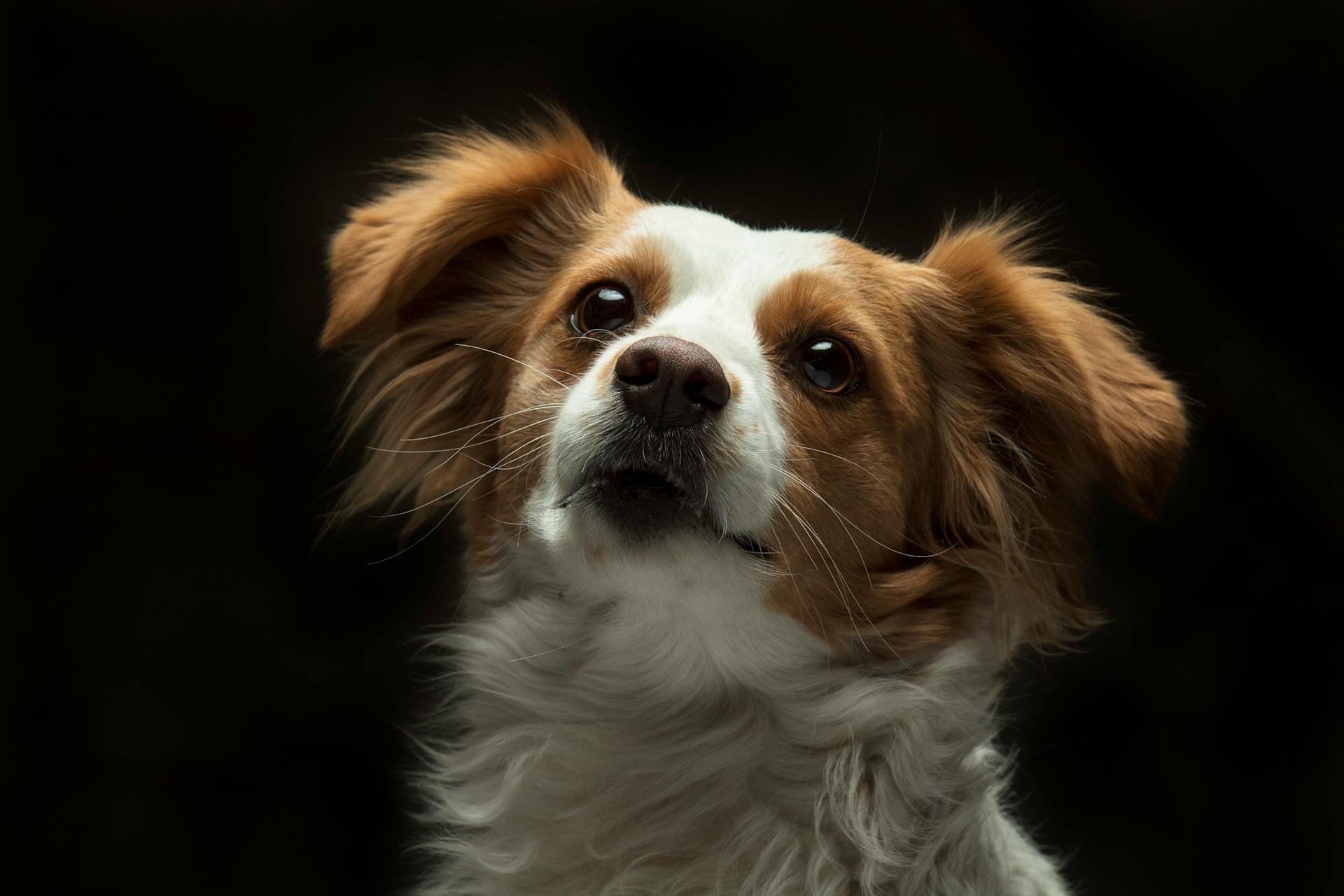
The Czechoslovakian Vlcak has a fascinating history that dates back to 1955.
In that year, a biological experiment was conducted in the CSSR, where a German Shepherd Dog was crossed with a Carpathian Wolf.
This unique pairing resulted in the breed now known as the Czechoslovakian Vlcak, abbreviated as CSV.
The offspring of the wolf and dog proved to be reared as a domestic breed.
After 10 years of experiments, breeders determined which wolf and dog qualities to select for, and no additional wolves have been introduced since 1983.
The Czechoslovakian Vlcak was recognized as the national breed of the Czech Republic and Slovakia in 1982.
The breed was initially employed as military working dogs and attack dogs, but with proper training, they also make excellent family dogs.
The American Kennel Club (AKC) recognized the breed in 2011 and changed its group designation from "Herding Dogs" to "Working Dogs".
The Federation Cynologique Internationale (FCI) gave the Czechoslovakian Wolfdog full recognition as a member of the Herding Group in 1998.
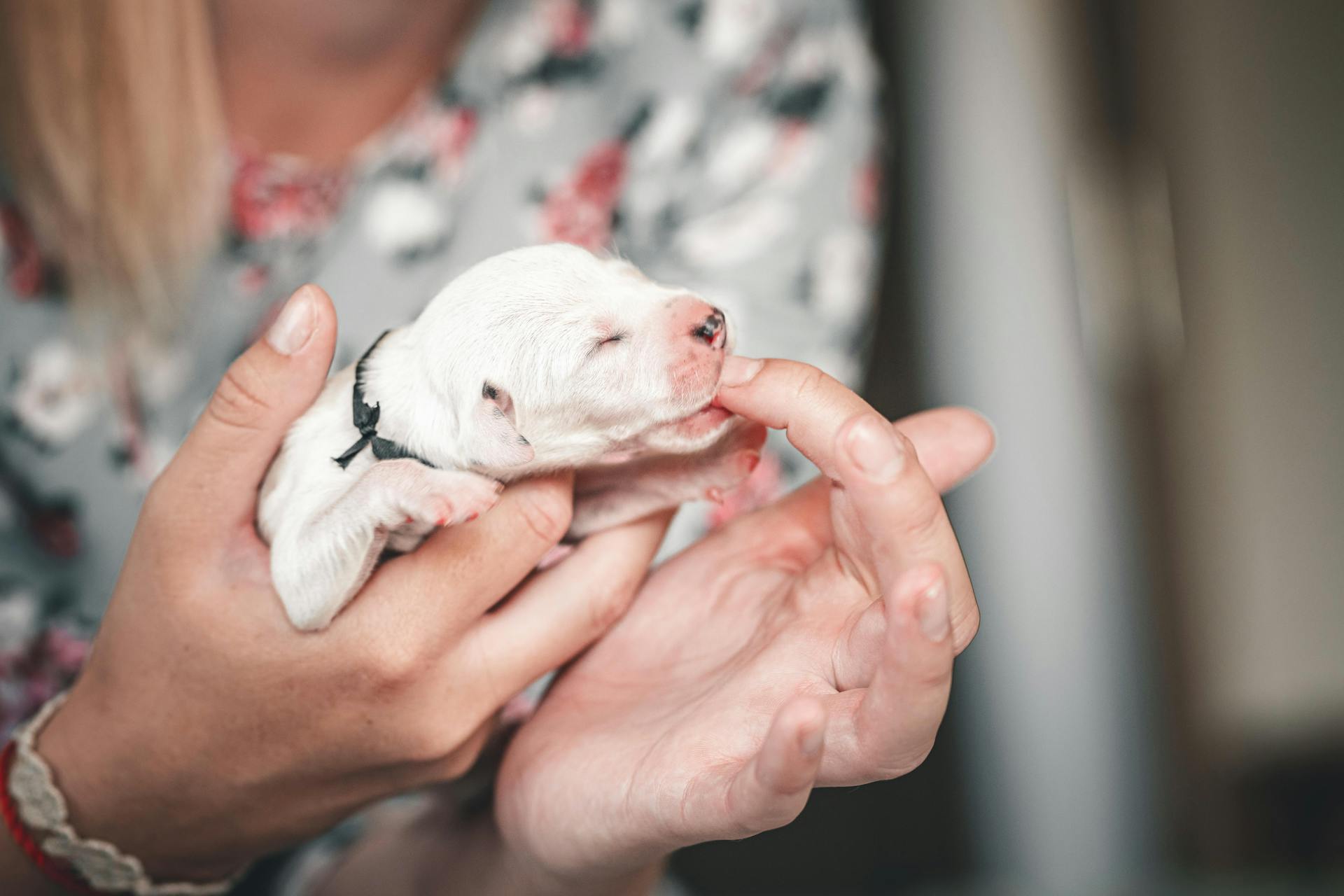
This sparked international demand for the breed and led to its importation across Europe.
By 2012, there were approximately 70 Czechoslovakian Wolfdogs between 16 states across the United States.
The breed has fewer than 1,000 genuinely pedigreed individuals in existence today, with less than 200 residing in the United States.
Wolf Dog Overview
The Czechoslovakian Vlcak is a unique breed that originated from a 1955 biological experiment in the CSSR. It's a cross between a German Shepherd Dog and a Carpathian Wolf, resulting in a powerful breed with exceptional senses and incredible stamina.
Their coat is characterized by straight and coarse fur, which reaches its thickest during the winter season. They experience heavy shedding twice a year, reducing the need for frequent bathing.
Exercise is crucial for a Vlcak's contentment and well-being, requiring a minimum of two hours per day. This should include walks, playtime, obedience training, and opportunities for exploration.
Their inherent hunting instincts make them unsuitable for households with small animals. However, with proper training, they can make excellent family dogs.
Here are some key characteristics of the Czechoslovakian Vlcak breed:
- Size: 24 to 26 inches tall at the shoulder, 60 to 80 pounds
- Breed group: Working dog
- Lifespan: 12 to 14 years
- Coat: Thick, double coat, usually gray or black
- Temperament: Intelligent, loyal, and active
Their intelligence and trainability make them suitable for various canine sports and working roles. With proper care and attention, they can thrive as family pets and excel in their roles as working dogs.
Frequently Asked Questions
What is the Czechoslovakian Vlcak used for?
The Czechoslovakian Vlcak is a versatile breed used for various tasks such as search and rescue, tracking, and herding. They excel in dog sports and are employed in Europe and the US for a range of working roles.
Are Czechoslovakian Wolfdogs good pets?
Czechoslovakian Wolfdogs are high-maintenance dogs that require experienced owners who can provide proper training and care. They may not be the best fit for first-time dog owners or those seeking a low-maintenance pet.
How much wolf is in a Czech wolfdog?
A Czech wolfdog is 6.25% wolf and 93.75% German Shepherd, with both wolves and dogs being the same species but different subspecies.
Are Czech wolfdogs rare?
Yes, Czech wolfdogs are relatively rare outside of Europe, particularly in the United States. Their limited availability makes them a unique and sought-after breed.
Featured Images: pexels.com
